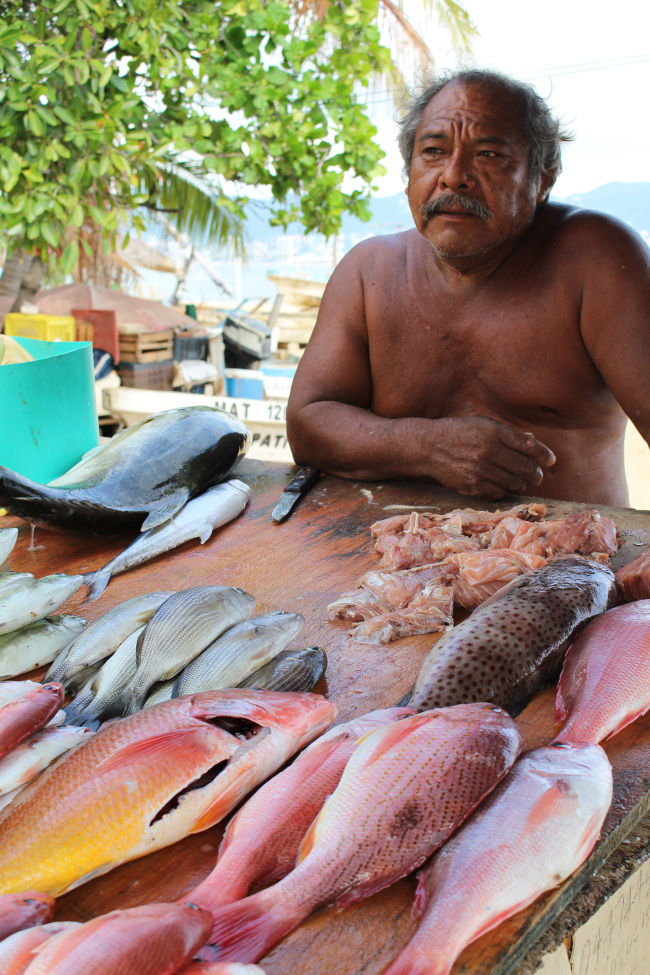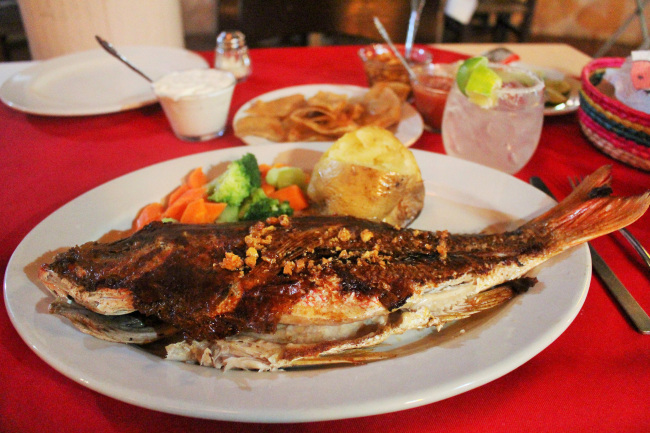ACAPULCO, Mexico -- Sorry, but for this story we’ll skip the standard references to Elizabeth Taylor’s third wedding, JFK’s honeymoon and cliff divers.
Acapulco. Gorgeous, still -- much of it. But it has problems.
First, the news: Grupo Autofin, already a strong tourism-industry presence here, announced plans this summer to invest $1 billion in new construction and upgrades along the Pacific coastline well south of the heart of the city and its famous bay. Included are high-end hotels, renovation of its 6,000-room Princess Hotel, a golf course, eco-park and other stuff.
For years, development had drifted southward toward and past the airport (also getting a major redo), and now this. In the New Acapulco, condo towers abound, all guarded. The marvelous Banyan Tree Cabo Marques (opened in 2010) is here, too, sequestered on cliffs above Puerto Marques and behind security that rivals Camp David’s.
What impact that billion will have on the magical Acapulco -- the one with the magnificent bay whose hills have sparkled so romantically at night since the Eisenhower administration -- we probably won’t know until 2022, Groupo Autofin’s target date for completion.
What we know now: Acapulco is struggling.
“Acapulco,” said Manuel Barrera, a lifelong native who gives tours when he isn’t shooting wedding photos, “was the first and only (beach) destination in Mexico, and it was like this for a long time. Then came Puerto Vallarta, Ixtapa, Cancun, Huatulco -- many, many places.
“And unfortunately, the modernization of Acapulco never came.”
That’s part of the reason non-Mexican tourists don’t come here much anymore.
The numbers are astonishing. Of the 8 million tourists who came to Acapulco in 2005, 340,000 were international, primarily from the United States -- a serious drop from earlier decades but only a hint of what was to come. In 2014, nearly 9 million visitors came here; of those 9 million, the number of international tourists was … 50,848. The rest were well-off Mexican nationals, largely from Mexico City.
Reporter to cabbie Jose: “Where are all the gringos?” Jose to reporter: “Cancun.”
There’s more: As recently as 2010, 138 cruise ships sailed passengers into Acapulco’s port. In 2014, the number of ship arrivals was … eight.
Numbers were up slightly in 2015 and again early this year, but those ships were headed for the Panama Canal and on other extended itineraries.
What happened to Acapulco?
Acapulco. Gorgeous, still -- much of it. But it has problems.
First, the news: Grupo Autofin, already a strong tourism-industry presence here, announced plans this summer to invest $1 billion in new construction and upgrades along the Pacific coastline well south of the heart of the city and its famous bay. Included are high-end hotels, renovation of its 6,000-room Princess Hotel, a golf course, eco-park and other stuff.
For years, development had drifted southward toward and past the airport (also getting a major redo), and now this. In the New Acapulco, condo towers abound, all guarded. The marvelous Banyan Tree Cabo Marques (opened in 2010) is here, too, sequestered on cliffs above Puerto Marques and behind security that rivals Camp David’s.
What impact that billion will have on the magical Acapulco -- the one with the magnificent bay whose hills have sparkled so romantically at night since the Eisenhower administration -- we probably won’t know until 2022, Groupo Autofin’s target date for completion.
What we know now: Acapulco is struggling.
“Acapulco,” said Manuel Barrera, a lifelong native who gives tours when he isn’t shooting wedding photos, “was the first and only (beach) destination in Mexico, and it was like this for a long time. Then came Puerto Vallarta, Ixtapa, Cancun, Huatulco -- many, many places.
“And unfortunately, the modernization of Acapulco never came.”
That’s part of the reason non-Mexican tourists don’t come here much anymore.
The numbers are astonishing. Of the 8 million tourists who came to Acapulco in 2005, 340,000 were international, primarily from the United States -- a serious drop from earlier decades but only a hint of what was to come. In 2014, nearly 9 million visitors came here; of those 9 million, the number of international tourists was … 50,848. The rest were well-off Mexican nationals, largely from Mexico City.
Reporter to cabbie Jose: “Where are all the gringos?” Jose to reporter: “Cancun.”
There’s more: As recently as 2010, 138 cruise ships sailed passengers into Acapulco’s port. In 2014, the number of ship arrivals was … eight.
Numbers were up slightly in 2015 and again early this year, but those ships were headed for the Panama Canal and on other extended itineraries.
What happened to Acapulco?

“The first destination that appeared after the first glory years of Acapulco (the 1950s and ‘60s) was Cancun,” said Piquis Rochin, international promotion director for the city’s marketing office. “And we underestimated the fast growth of Cancun.”
The Mexican government helped develop Cancun, starting in 1970, from essentially a fishing village into a tourism monster. Soon after, it did the same (with more modest results) in Ixtapa. Later, Huatulco.
All were planned developments. Unlike those, Acapulco’s awakening and growth as a vacation destination just sort of happened.
“Cancun,” said Geraldina Torreblanca, manager of the nicely renovated Boca Chica Hotel on Caletilla Beach in the city’s original hotel core, “has the residential area and has a touristic area. You don’t have to mix them. Here, it got mixed, because we started growing, like, out of control.”
It was sprawl and unmanageable entrepreneurial chaos. The only relief was the bay, beautiful Acapulco Bay -- which, because no one planned on the city growing from 49,000 in 1960 to 800,000 a few decades later, became polluted, primarily from human wastewater.
So for Americans and Canadians and Europeans, with new, attractive options, Acapulco became very optional.
Tony Rullan, for a time, was part-owner of Villa Vera, a legendary hotel and movie-star hangout. Today he owns Tony’s Asian Bistro, a high-end restaurant with a bay view, and two discos (including the 3,000-capacity Palladium) that once throbbed every night and now throbs only on weekends.
“Instead of maintaining the property in what is supposed to be their best condition,” he said of other hoteliers, “they were more obsessed with stealing a group from someone else for $10, $15. So they got into a price war, and that hurt everybody. The price is being paid now.”
Finally and emphatically, the drug-related violence that began in 2011, and from time to time makes headlines even now, chased away business. Not fair, say locals.
“The problems,” said Melchor Gonzalez, manager of the refurbished Mirador Hotel, “are for the people in the cartels, not for the tourists.”
“It doesn’t happen to normal people in Acapulco,” agreed Rochin, a diminutive, fiery woman who lives just steps from “The Costera,” the forever-busy main drag named Avenida Costera Miguel Aleman. “It doesn’t happen to me. It doesn’t happen to my friends. I go out to the movies. I go out to the bingo. I come home very late almost every night -- I have never had any incidents.”
“The Media,” say people from hotel managers to bellmen to bartenders and waitstaff to shopkeepers, are to blame for misperceptions.
“Acapulco is news,” said Rullan. “If something happens 200 kilometers from here, they say, ‘in Acapulco.’ ”

Yet heavily armed soldiers are a presence throughout the tourist zones, including at beaches and in front of leading hotels. Which sends a mixed message: If violence toward tourists isn’t an issue, why are the troops where the tourists are?
“I agree with you,” said Rullan. “It’s a double-edged sword.”
There’s more. The US State Department issued an advisory, updated in April and still (as of this writing) in force, that bars government personnel from the city. Not reassuring. Plus inconvenience: Today, only Houston offers nonstop flights from North America, making getting here a time-consuming hassle for most people.
Meanwhile (and less visible in The Media): Successful efforts to divert and treat wastewater have restored safe swimming to Acapulco Bay. The beaches are busy again, and they look and smell just fine. Ship arrivals are increasing, albeit slowly. Talks are ongoing that could restore more nonstop flights from North America next year.
Tourism interests are promoting attractions beyond beaches and nightlife, including ecotourism; Tres Palos and Coyuca lagoons, both rich in bird life, are getting more play. The 17th century Fort of San Diego, once a lifeless rock pile, today houses a pretty good museum detailing the city’s historic shipping connections with Asia and its colorful pirate history.
Increasingly, some established hotels, and not just the Princess, are pouring money into upgrades, including iconic Las Brisas, with its familiar pink jeeps and discreet, private pools. Splashy new restaurants are opening. A remarkable Diego Rivera mosaic, on an exterior wall at a house in a forgotten part of town, is getting fresh attention.
At night, the hills surrounding Acapulco Bay still sparkle like the stars -- just the way you remember it. If you squint a little and ignore the troops, it looks about the way Liz would remember it, and Jack and Jackie and countless other honeymooners (including, well, the Solomons).
And -- OK -- those cliff divers. Heart-pounding as ever.
Might be worth a revisit. But just to be safe, keep one -- cynical -- eye on The Media.
(Tribune Content Agency)
By Alan Solomon
Chicago Tribune
-
Articles by Korea Herald



![[Exclusive] Korean military set to ban iPhones over 'security' concerns](http://res.heraldm.com/phpwas/restmb_idxmake.php?idx=644&simg=/content/image/2024/04/23/20240423050599_0.jpg&u=20240423183955)

![[Graphic News] 77% of young Koreans still financially dependent](http://res.heraldm.com/phpwas/restmb_idxmake.php?idx=644&simg=/content/image/2024/04/22/20240422050762_0.gif&u=)



![[Pressure points] Leggings in public: Fashion statement or social faux pas?](http://res.heraldm.com/phpwas/restmb_idxmake.php?idx=644&simg=/content/image/2024/04/23/20240423050669_0.jpg&u=)










